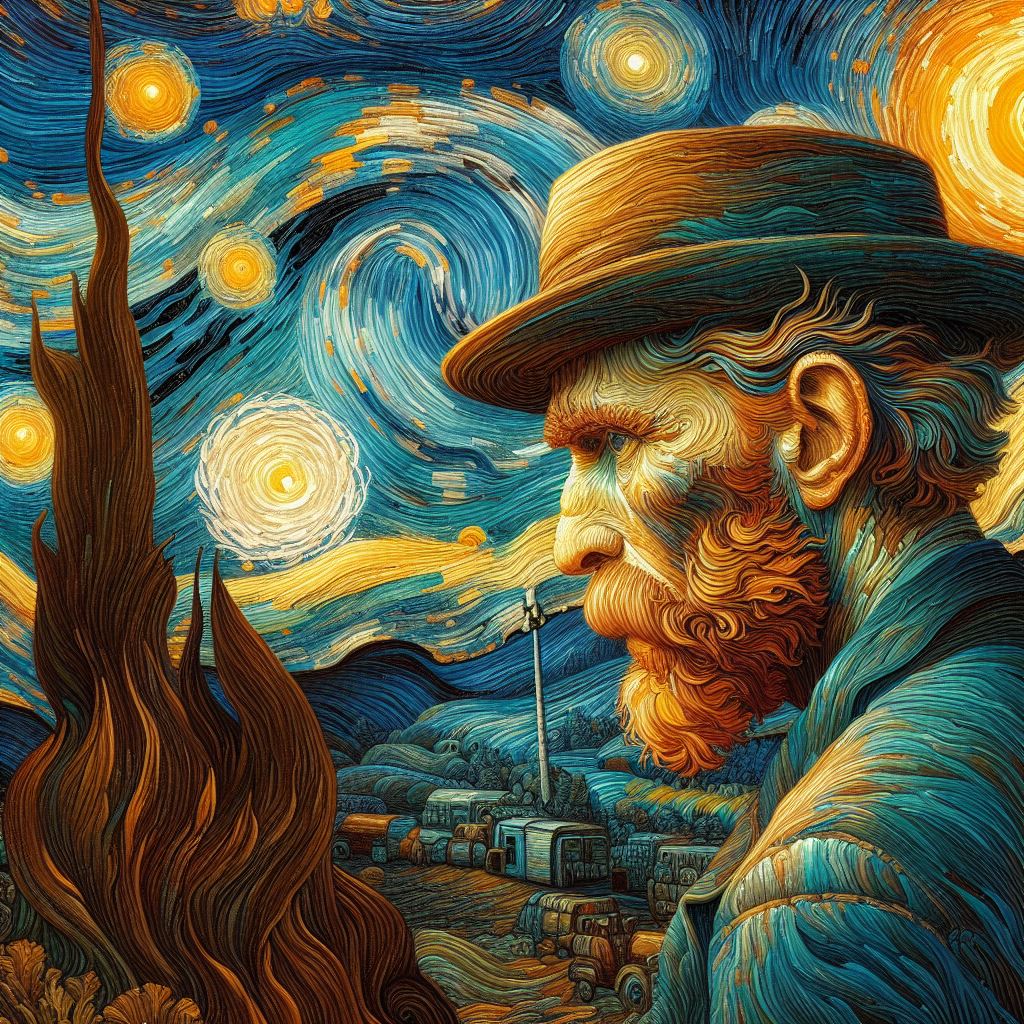Don't miss our winter offers - up to 15% OFF!
Vincent van Gogh’s Missing Ear: A Tale of Art, Madness, and Mystery
Vincent van Gogh’s Missing Ear: A Tale of Art, Madness, and Mystery

Introduction
Vincent van Gogh, one of the most celebrated and influential figures in the history of Western art, is as famous for his unique painting style as he is for his troubled life. Among the many facets of his biography, the story of his missing ear stands out as one of the most intriguing and debated. This incident not only symbolizes his struggles with mental health but also remains shrouded in mystery and speculation. In this blog post, we delve deep into the events leading up to the fateful night, the aftermath, and the various theories that have emerged over the years.
Early Life and Struggles
Vincent van Gogh was born on March 30, 1853, in Groot-Zundert, Netherlands. Despite coming from a family of art dealers, his journey to becoming a painter was not straightforward. He struggled with various professions before committing to art at the age of 27. His early works, inspired by his surroundings in the Netherlands, were dark and somber, reflecting his inner turmoil and financial hardships.
The Move to Paris and Evolution of Style
In 1886, van Gogh moved to Paris, where he was introduced to the works of the Impressionists and Post-Impressionists. This period marked a significant transformation in his style. His palette brightened, and he developed the bold, expressive brushstrokes that would define his work. However, this period of creative flourishing was also marked by personal struggles. Van Gogh suffered from bouts of depression and psychosis, which worsened over time.
The Arles Period: Hope and Despair
Seeking a simpler life and inspired by the light and color of the south, van Gogh moved to Arles in 1888. He dreamed of establishing an artist colony and invited fellow artist Paul Gauguin to join him. Initially, their collaboration seemed promising. Van Gogh produced some of his most famous works during this period, including “The Sunflowers” and “The Bedroom.” However, the relationship between the two artists soon deteriorated.
The Fateful Night
On the night of December 23, 1888, an argument between van Gogh and Gauguin escalated dramatically. Accounts of what happened next vary. The most widely accepted version is that, in a fit of rage and despair, van Gogh severed a portion of his own left ear with a razor. He then wrapped the ear in paper and presented it to a woman at a nearby brothel, instructing her to “keep this object carefully.”
Aftermath and Hospitalization
Van Gogh was found unconscious the next morning and taken to a hospital in Arles. The incident marked the beginning of a series of hospitalizations. Gauguin left Arles, and van Gogh’s hopes for an artist community were dashed. Despite the setback, van Gogh continued to paint prolifically, producing some of his most renowned works during his stay in the hospital.
Theories and Speculations
The incident with the ear has spawned numerous theories and speculations. Some suggest that Gauguin, an accomplished fencer, might have been involved in the ear’s severing during a confrontation. Others propose that van Gogh’s actions were a manifestation of a severe mental breakdown, possibly exacerbated by his consumption of absinthe and his epilepsy.
Legacy and Impact
Vincent van Gogh’s life ended tragically early when he died from a gunshot wound in 1890, widely believed to be self-inflicted. Despite his struggles and relatively few years of artistic production, his work has had a profound and lasting impact on the art world. The story of his missing ear has become a symbol of the tortured artist, reflecting the close link between creativity and mental health struggles.
Conclusion
Vincent van Gogh’s missing ear remains one of the most enigmatic episodes in art history. It encapsulates the complexities of his personality and the extreme conditions under which he created his masterpieces. As we continue to celebrate his contributions to art, it is essential to remember the human behind the legend, whose life was marked by both extraordinary talent and profound suffering.
